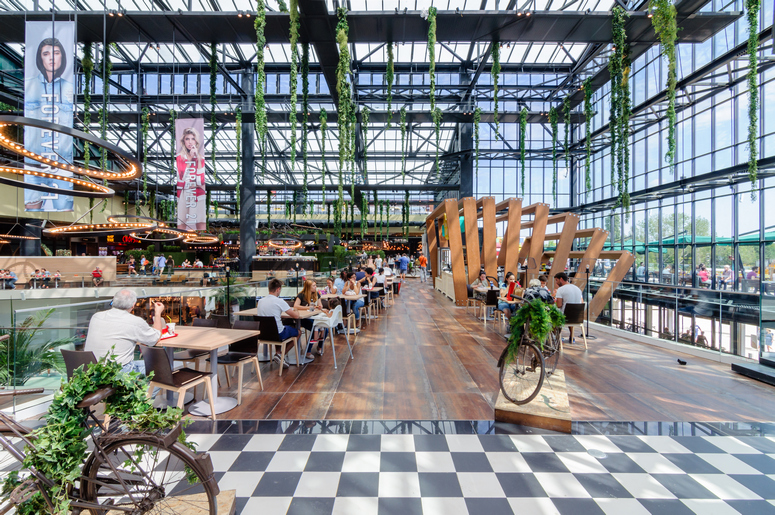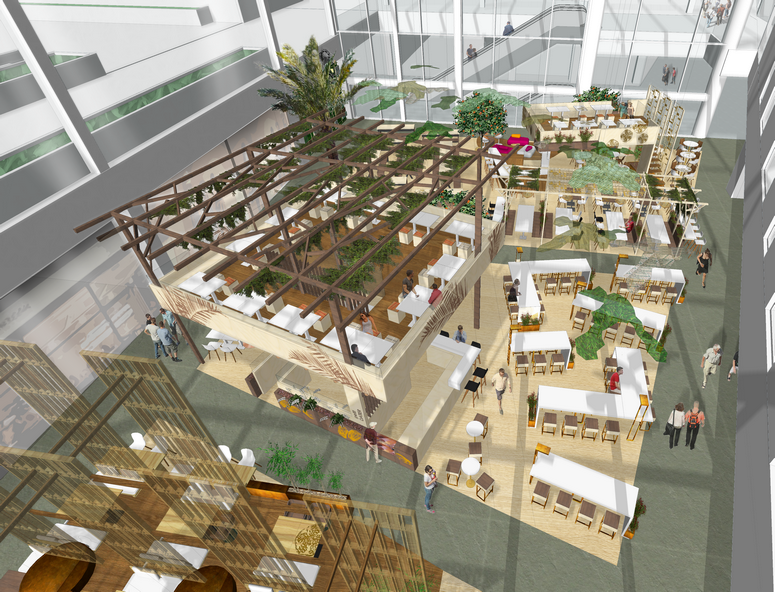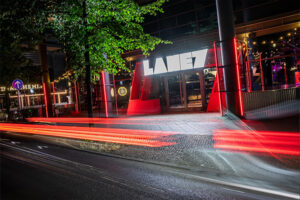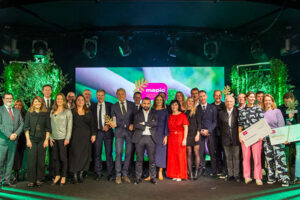By Jorge Morgadinho

Innovation in shopping centers is no longer optional—it is compulsory for operators and developers. As consumers demand fresh experiences and leisure options from their shopping center outings, the transformation of food and beverage (F&B) areas into key resources for creating value for tenants and shopping center owners is as important as the enhancement of shops or leisure provision.
More than just a place to eat, visitors are looking at F&B areas as a social place, where they can gather and spend time. This understanding has led Sonae Sierra to rethink F&B areas and develop from scratch third generation food areas’ concepts, which attract more visitors and clients to stay for a longer period, generating higher spending and ultimately translating into superior sales and rents.
While the design of the F&B areas should be unified, food courts are no longer about creating a single ambience, but a baseline for building different areas distinguished by variety and dynamism and with innovative and surprising decoration—all destined for a wider range of uses. Designed to encourage work, business meetings, and for studying, entertainment, and relaxation, customers should feel at ease alone, in groups of colleagues or friends, or as a family or couple.

As ever, it’s the detail and comfort that makes the difference: services for families, charging stations for phones and laptops, sophisticated lighting, acoustic treatment, nice landscape areas and even outside picnic areas can have a significant effect on dwell time, spending, and overall sales.
Markets, Kitchens, Taste Block, Food Halls etc.
We thus no longer simply design and develop food courts, we do markets, kitchens, taste blocks, food halls, and other F&B areas that are far from that original term.
Sonae Sierra’s third-generation food area in our ParkLake shopping center in Bucharest, Romania, is a prime example of how a F&B zone can act as an anchor for a center. It’s positioned as a meeting point and promotes an encounter with nature, linking interior and exterior spaces that are connected to one of the largest parks in the city.

It’s distinguished by an innovative and dynamic commercial mix, created through the juxtaposition of temporary kiosks providing a varied offer together with fresh fruits and vegetables, traditional and ethnic food styles that are as diverse as possible.
Meanwhile, Cascais Kitchen in CascaiShopping, in Portugal, is inspired by traditional food markets in Germany, The Netherlands, and Austria and it’s truly a compelling example of a multi-functional space which successfully blends work, relaxation, entertainment and world food. Additionally, its architectural and concept innovation has promoted a 2.9% increase in existing, second-generation food court sales at CascaiShopping in the first months since its opening.

Another example is in GranCasa in Zaragoza, Spain, where our renovation project is focusing on the creation of a state-of-the-art food area, with a wide and large variety of restaurants and an innovative two-floor space comprising a playground and outdoor terrace.
Sonae Sierra has completely rethought the importance of food with their designs of F&B areas in Morocco’s Marina Shopping Center (Casablanca) and Arribat Centre (Rabat), creating true F&B anchors. Two more examples of extremely creative F&B areas are totally different from one other: CityLife, in Milan, Italy, will have “City Tast3” (due to open in November 2017), while Jardín Plaza Cúcuta, in Cúcuta, Colombia, will open in 2018.
Unique Projects

All these projects have the same principles behind them, such as a “market” feeling, yet they all differ significantly. Localization is key: Each project must be unique and we mustn’t repeat ourselves.
Food is more fashionable than it has ever been and some chefs are now akin to rock stars. Food is increasingly omnipresent in our lives, in TV shows, magazines, cooking classes, and internet site reviews.
We believe that concepts such as those Sonae Sierra is developing for its own projects and for third parties create a reason by themselves to visit a shopping center. They are becoming the main anchor of the overall schemes, offering a place of new synergies that promote the evolution of monetization strategies and value creation, while enhancing differentiation and underlining the leadership of a shopping offer in its urban environment.






